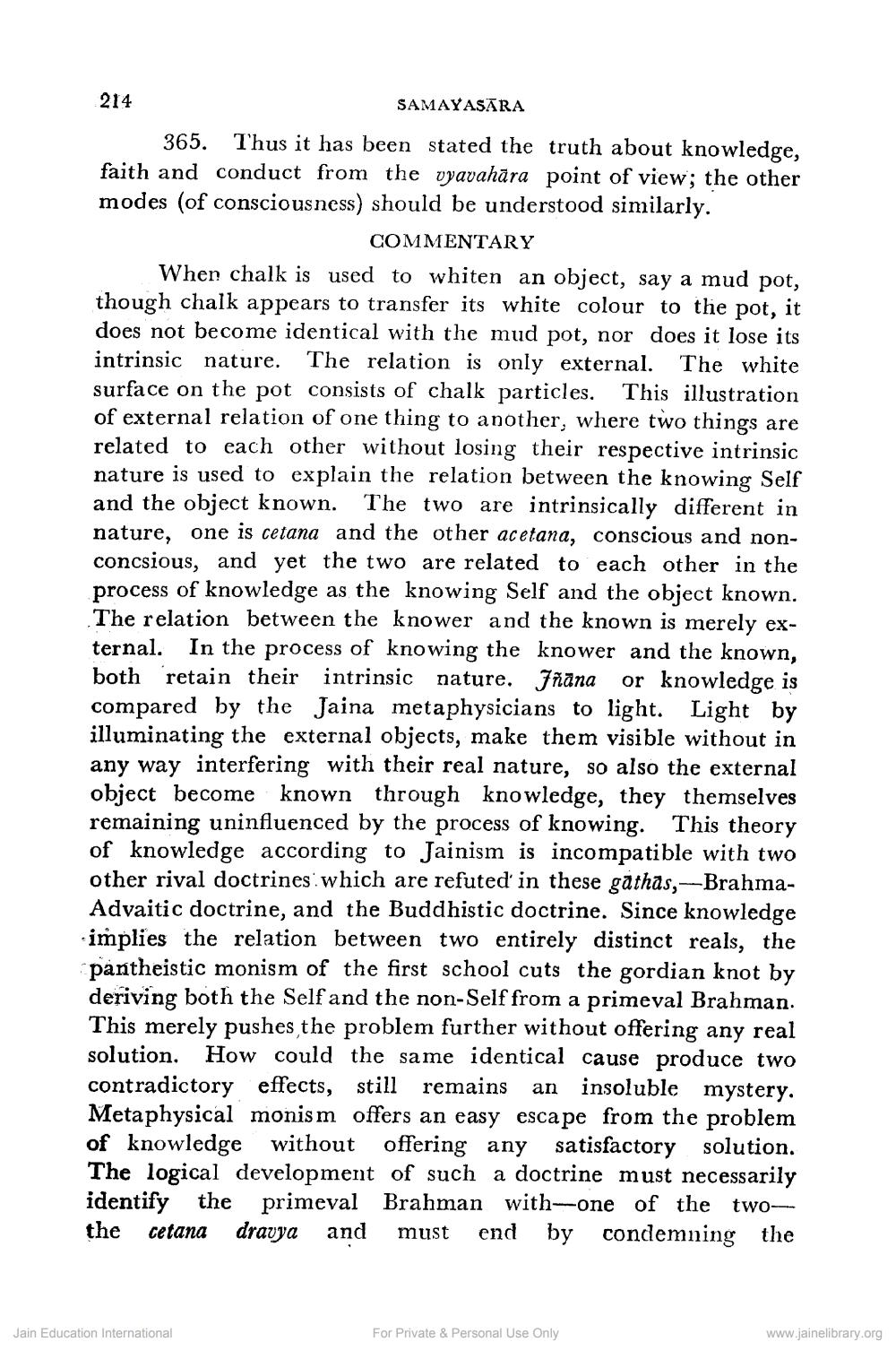________________
214
SAMAYASARA 365. Thus it has been stated the truth about knowledge, faith and conduct from the vyavahāra point of view; the other modes (of consciousness) should be understood similarly.
COMMENTARY When chalk is used to whiten a object, say a mud pot, though chalk appears to transfer its white colour to the pot, it does not become identical with the mud pot, nor does it lose its intrinsic nature. The relation is only external. The white surface on the pot consists of chalk particles. This illustration of external relation of one thing to another, where two things are related to each other without losing their respective intrinsic nature is used to explain the relation between the knowing Self and the object known. The two are intrinsically different in nature, one is cetana and the other acetana, conscious and nonconcsious, and yet the two are related to each other in the process of knowledge as the knowing Self and the object known. The relation between the knower and the known is merely external. In the process of knowing the knower and the known, both retain their intrinsic nature. Jñana or knowledge is compared by the Jaina metaphysicians to light. Light by illuminating the external objects, make them visible without in any way interfering with their real nature, so also the external object become known through knowledge, they themselves remaining uninfluenced by the process of knowing. This theory of knowledge according to Jainism is incompatible with two other rival doctrines which are refuted' in these găthas,--BrahmaAdvaitic doctrine, and the Buddhistic doctrine. Since knowledge implies the relation between two entirely distinct reals, the pantheistic monism of the first school cuts the gordian knot by deriving both the Self and the non-Self from a primeval Brahman. This merely pushes the problem further without offering any real solution. How could the same identical cause produce two contradictory effects, still remains an insoluble mystery. Metaphysical monism offers an easy escape from the problem of knowledge without offering any satisfactory solution. The logical development of such a doctrine must necessarily identify the primeval Brahman with one of the twothe cetana dravya and must end by condemning the
Jain Education International
For Private & Personal Use Only
www.jainelibrary.org




